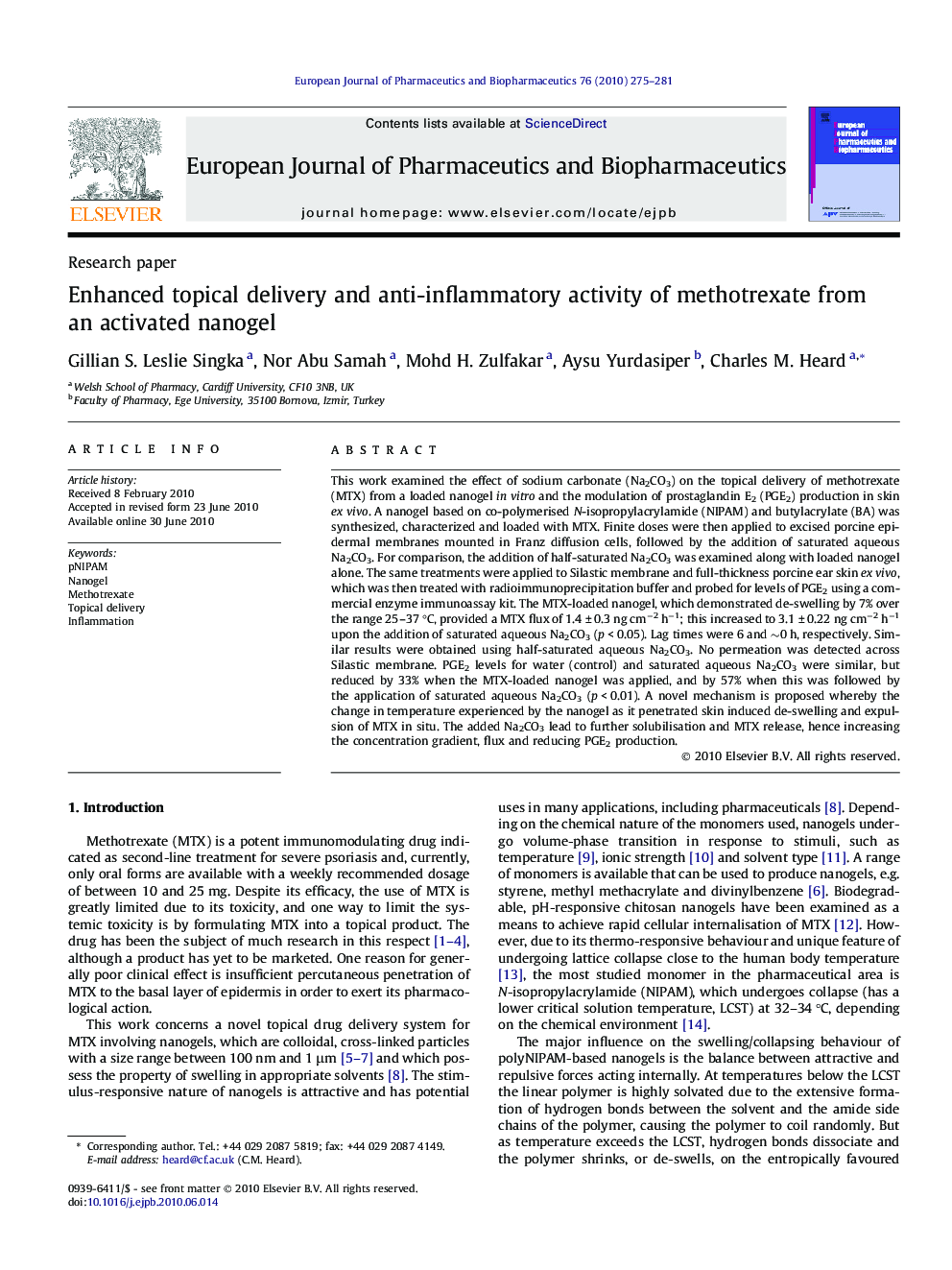| Article ID | Journal | Published Year | Pages | File Type |
|---|---|---|---|---|
| 2084323 | European Journal of Pharmaceutics and Biopharmaceutics | 2010 | 7 Pages |
This work examined the effect of sodium carbonate (Na2CO3) on the topical delivery of methotrexate (MTX) from a loaded nanogel in vitro and the modulation of prostaglandin E2 (PGE2) production in skin ex vivo. A nanogel based on co-polymerised N-isopropylacrylamide (NIPAM) and butylacrylate (BA) was synthesized, characterized and loaded with MTX. Finite doses were then applied to excised porcine epidermal membranes mounted in Franz diffusion cells, followed by the addition of saturated aqueous Na2CO3. For comparison, the addition of half-saturated Na2CO3 was examined along with loaded nanogel alone. The same treatments were applied to Silastic membrane and full-thickness porcine ear skin ex vivo, which was then treated with radioimmunoprecipitation buffer and probed for levels of PGE2 using a commercial enzyme immunoassay kit. The MTX-loaded nanogel, which demonstrated de-swelling by 7% over the range 25–37 °C, provided a MTX flux of 1.4 ± 0.3 ng cm−2 h−1; this increased to 3.1 ± 0.22 ng cm−2 h−1 upon the addition of saturated aqueous Na2CO3 (p < 0.05). Lag times were 6 and ∼0 h, respectively. Similar results were obtained using half-saturated aqueous Na2CO3. No permeation was detected across Silastic membrane. PGE2 levels for water (control) and saturated aqueous Na2CO3 were similar, but reduced by 33% when the MTX-loaded nanogel was applied, and by 57% when this was followed by the application of saturated aqueous Na2CO3 (p < 0.01). A novel mechanism is proposed whereby the change in temperature experienced by the nanogel as it penetrated skin induced de-swelling and expulsion of MTX in situ. The added Na2CO3 lead to further solubilisation and MTX release, hence increasing the concentration gradient, flux and reducing PGE2 production.
Graphical abstractProposed methotrexate delivery mechanism.Figure optionsDownload full-size imageDownload as PowerPoint slide
